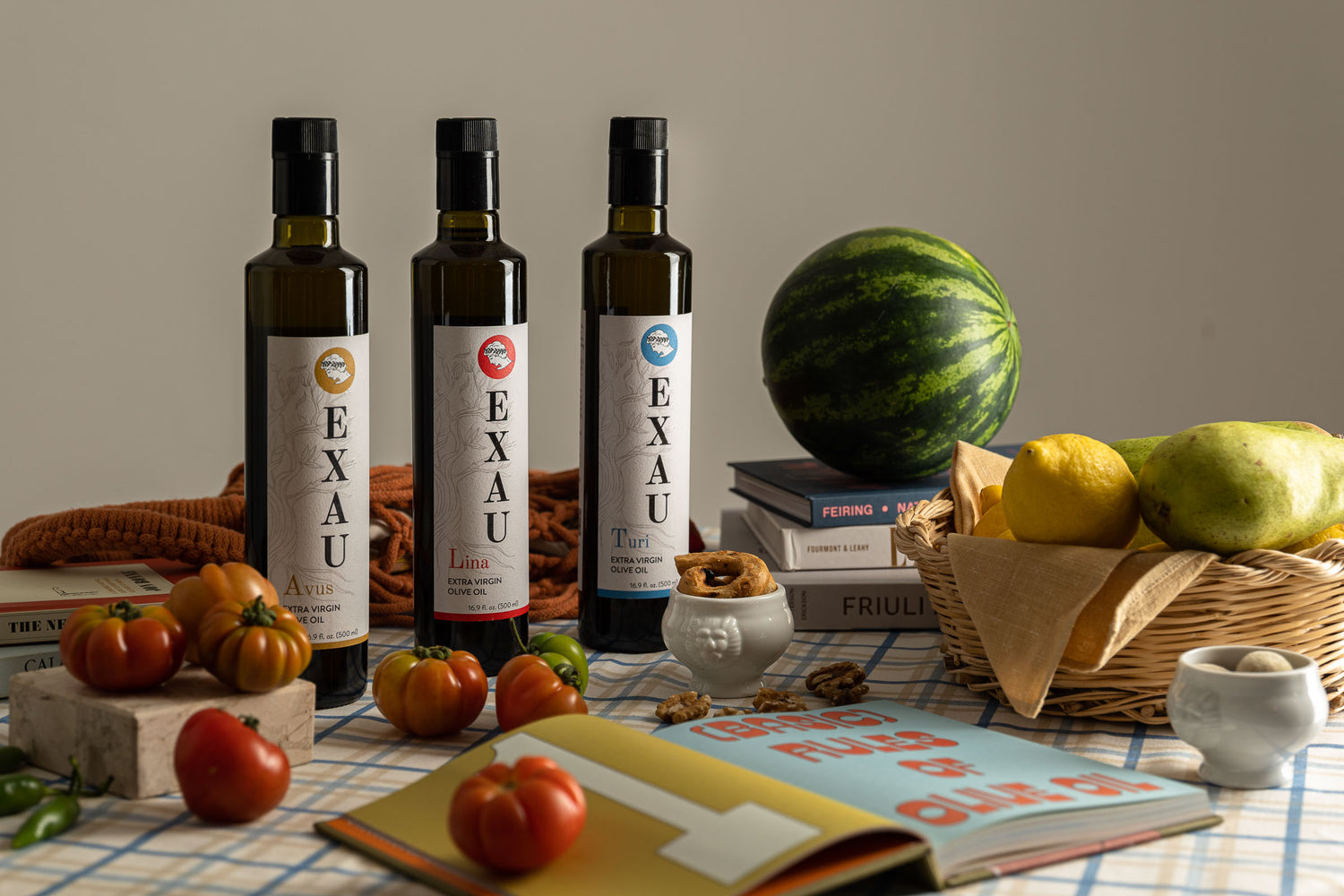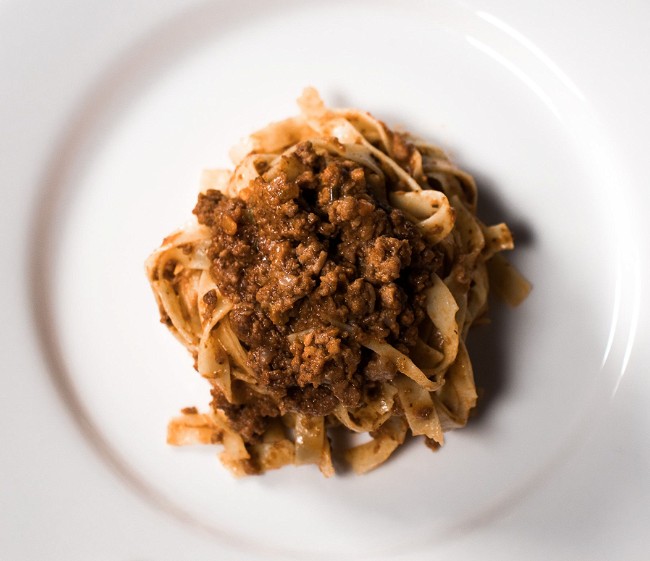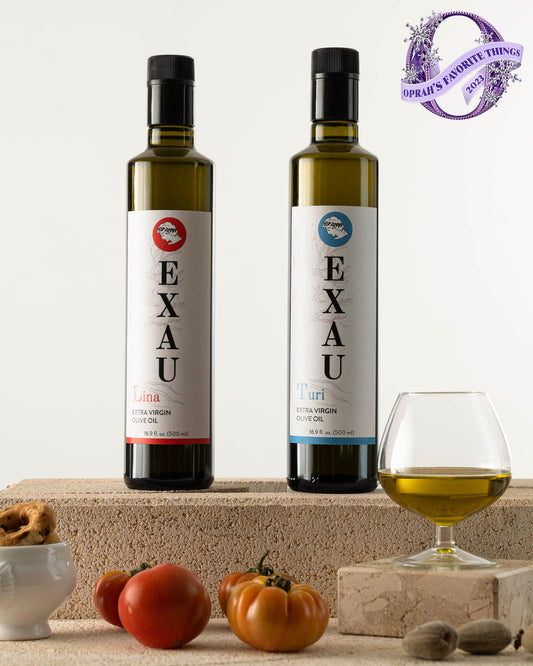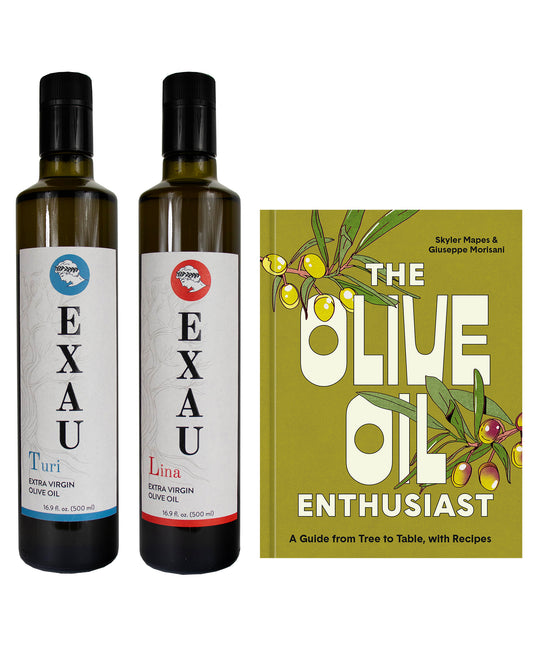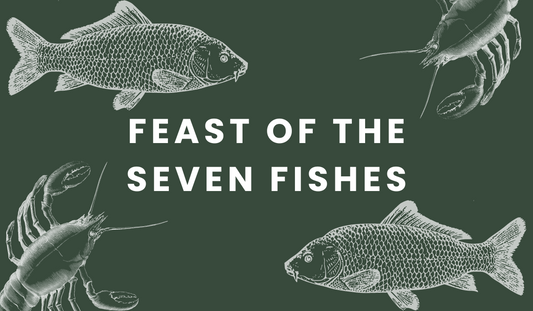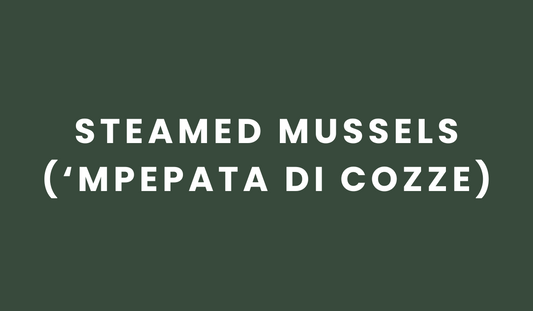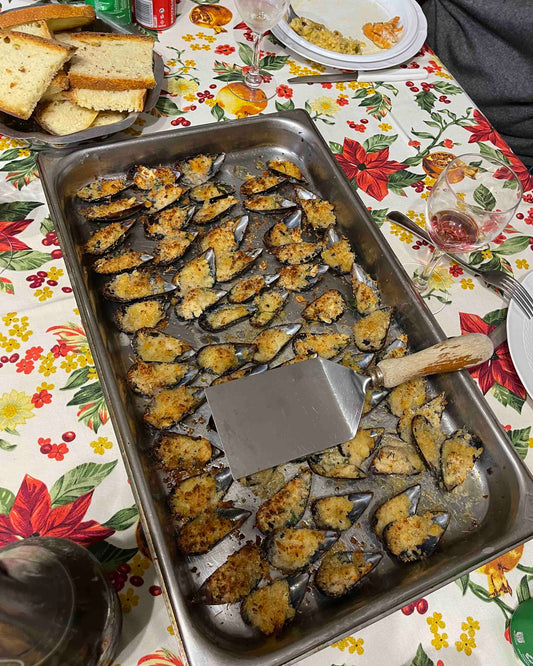Originally from the city of Bologna, tagliatelle alla bolognese is a delicious dish made up of a rich, meaty sauce and silky homemade pasta.
This recipe will take you on a flavorful journey through the history, ingredients, preparation, and frequently asked questions about this dish.
What is Ragù alla Bolognese?
Ragù alla Bolognese is a traditional ragù (meat sauce) made of guanciale, ground meat, soffrito (onions, celery, carrot), wine, and a splash of tomato. The dish is native to Emilia Romagna, a northern-central region of Italy.
There are a few misconceptions about this sauce, such as it requires many ingredients. However, like most Italian dishes, more does not equal better. Keep it simple, there’s no need to add everything in your refrigerator to the pot.
It's also often believed that ragù bolognese is difficult to make but the only thing you really need is patience and simple high-quality ingredients.
The History Behind Tagliatelle alla Bolognese
Every iconic dish has a story, and ragu alla bolognese is no exception. Its roots can be traced back to the rich culinary traditions of Bologna, the capital city of the Emilia-Romagna region. The city has long been regarded as the gastronomic heart of Italy, and it's there that the concept of the ragù sauce was developed.
Legend has it that in the 18th century, a Bolognese chef named Alberto Alvisi created the original recipe for Tagliatelle alla Bolognese. Inspired by the marriage of pasta and meat, he crafted a sauce using local ingredients readily available in Bologna's markets.
His creation soon gained popularity, spreading throughout Italy and eventually finding its place on menus around the world.
Types of Pasta
Bolognese sauce is traditionally served with tagliatelle egg noodles, hence the name. Emilians have always preferred the authentic fresh tagliatelle pasta made of egg dough instead of the traditional durum wheat semolina pasta which is generally dried.
You find dried tagliatelle at your local super market, however, if you want to try fresh you can try your local specialty market. Or make it at home yourself! Regardless of which pasta route you go make sure to read the cook time instructions thoroughly ahead of time.
Ragu alla bolognese is also served with other types of pasta such as lasagna or the typical poor dish of the past, polenta.
Adaptions in the US
In the U.S. it's common to find Spaghetti alla Bolognese. However, that’s not the correct name or pasta type for this sauce. If you spend some time visiting or traveling through Italy you won't see spaghetti and bolognese together because the correct pasta type is tagliatelle.
Read more about the way this came to be here.

How to Make Ragu alla Bolognese
Finally chop the onions, celery, carrot, and guanciale or bacon into 1/4" pieces. The smaller the better because we are making a soffritto.
Heat a medium pot on low then add the guanciale and cook with the lid on for about 15 minutes stirring every few minutes. You want the fat to render but don't want the meat to burn so it's important to cook low and slow.
If the pan looks like it needs a bit more fat you can add a generous drizzle of extra virgin olive oil. Then add the onions, celery, carrot, and seasonings then stir and cover with a lid.
Stir every few minutes until the soffritto looks nice and golden brown. Then add the ground beef. You really want the beef to brown because that's what helps build and layer a lot of the flavors in this ragu. The meat should look nice and brown before adding the wine.
Add the wine to help deglaze the pan and remove any sticky bits from the bottom of the pan. Run a wooden spoon or spatula back and forth across for a minute or so. Let the wine completely evaporate.
Add the tomato paste to the pan first and stir, it should sizzle nicely, this also helps build flavor. Then add a bit of broth.
We want to bulk up the ragu with the broth very very slowly. So it's important not to add too much broth at once. Add a ladle once every 20 to 30 minutes or so when it looks like the ragu is drying out.
The final texture should be of a meat sauce but with a rich creaminess.
What Kind of Ground Beef Should I Use?
If you use a fatty cut of pork like guanciale or bacon as a base for the soffritto you can get away with using a leaner ground beef. this is because the fat will render nicely and therefore, help distribute flavor and soften the ground beef as it cooks.
What If I Don't Want to Use Guanciale or Bacon?
You can use pancetta if you really want, but true ragu is made with guanciale. If you want to skip the pork altogether you can just make the soffritto with extra virgin olive oil, onions, celery, and carrot, and continue on with the recipe as usual.
Make Sure to Brown the Meat
Do not under any circumstances skip this step! We know it's tedious but the meat needs to brown and slightly stick to the bottom of the pan in order to develop those deep flavors.
Browning the meat thoroughly is probably the most important step in this recipe so don't cut this out.
Why Don't You Add Milk?
This ragu alla bolognese is incredibly rich, so adding milk would take it over the top. Plus we aren't huge fans of dairy in pasta sauces. There's certainly a time and place for it but we prefer this sauce to be dairy free, personally. But try it out and let us know what you think!
How Far Ahead Can You Make This?
The longer this sits the better it gets, we recommend making it up to four days ahead of time. It also freezes super well so if you have leftover ragu or need to prep far ahead you can freeze it!
Other recipes you might like...
Hey, we wrote a cookbook and guide called The Olive Oil Enthusiast, have you ordered it yet?
If you make this recipe please let a comment and let us know! We love to hear from you. If you’re on Instagram, Facebook, or TikTok don’t forget to tag us and use #EXAUoliveoil so we can repost!
